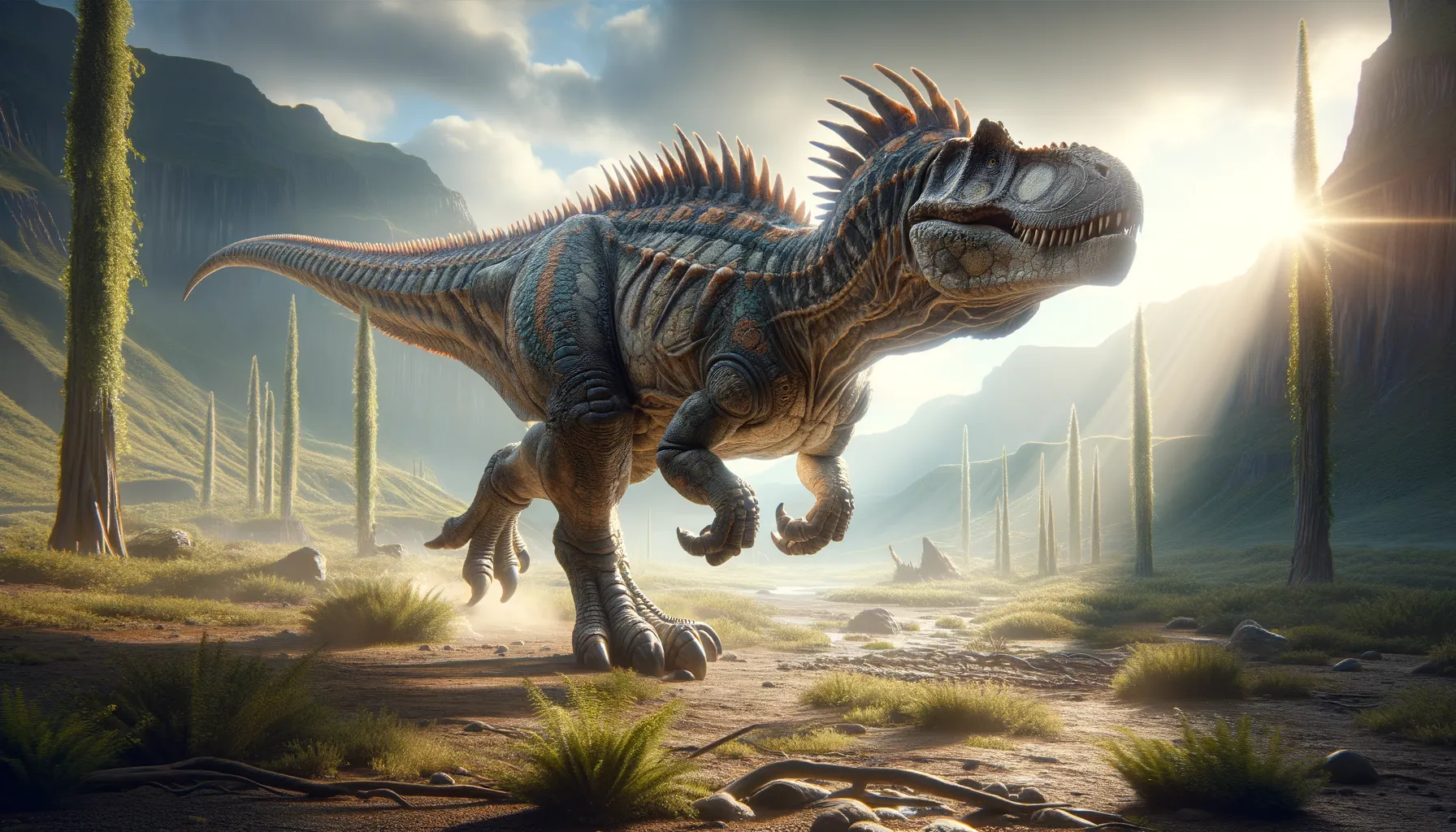
Bissektipelta
Armored giant of ancient lands.
Period
Cretaceous
Length
Around 4.5 meters in length.
Height
Approximately 2 meters tall.
Weight
Estimated around 2 tons.
Bissektipelta was a heavily armored dinosaur from the late Cretaceous period, primarily known from fossil finds in Uzbekistan. It had a robust body with bony plates for protection, making it well-suited to fend off predators. As a herbivore, it likely fed on low-lying vegetation in its environment. Its thick armor provided ample defense against the large carnivorous dinosaurs of its time.
Diet
Bissektipelta was a herbivore, primarily feeding on ferns, cycads, and other low-lying vegetation. It used its beak-like mouth to crop leaves and its strong jaws to grind them effectively.
Hunting
Being a herbivore, Bissektipelta did not hunt but was likely constantly alert to predators. Its keen senses would have helped it detect threats in its environment.
Environmental challenges
Bissektipelta faced challenges from predation by large carnivorous dinosaurs and needed to constantly stay vigilant. Seasonal changes also affected the availability of food, requiring it to adapt to periods of scarcity. The rough terrain and vegetation could pose both a source of food and potential hazards for movement. Its heavy armor, however, provided a significant advantage in surviving attacks.
Speed
Slow, primarily due to its heavy armor.
Lifespan
Estimated at 25 to 30 years.
First discovery
Discovered in Uzbekistan's Bissekty Formation.
Fun Facts
- Bissektipelta was a dinosaur from the late Cretaceous period, about 90 million years ago.
- It belonged to a group of armored dinosaurs called ankylosaurs, known for their bony plates and spikes.
- The name 'Bissektipelta' means 'Bissekty shield', referring to the Bissekty Formation where its fossils were found in Uzbekistan.
- This dinosaur is known primarily from fragments of its armor, which indicates it had a protective shield.
- Bissektipelta's diet likely consisted of low-growing plants and vegetation, like other ankylosaurs.
- Its body armor would have helped protect it from predators like the large theropods that roamed its habitat.
- Being part of the ankylosaur family, it likely had a club-like tail used for defense against predators.
Growth and Development
Young Bissektipelta likely hatched from eggs and experienced significant growth in their early years. The development of their protective plates would have been crucial for survival. As they matured, they grew more robust, with their bony armor becoming more prominent. Growth may have slowed down as they reached adulthood.
Habitat
Bissektipelta inhabited forested areas with abundant vegetation, providing both food and cover. The environment was likely warm and humid, supporting diverse plant life. Its habitat probably included rivers or wetlands, which sustained the lush plant growth. These forests provided shelter and were shared with various other dinosaur species.
Interaction with other species
Bissektipelta would have coexisted with other herbivores, competing for the same resources. It played an important role in the ecosystem as a prey animal for larger carnivores. Social interactions among Bissektipelta might have been limited, although young ones could stay in groups for better protection. Their primary interactions with other species involved avoiding predation.
Natural lifespan
Bissektipelta had a natural lifespan of 25 to 30 years.
Reproduction
Bissektipelta likely laid eggs, as common with most dinosaurs. Nesting areas would have been chosen carefully, possibly in secluded spots to avoid predators. Parental care might have been minimal, with hatchlings being relatively independent soon after birth. Clutches of eggs were probably laid to increase the chances of offspring survival.
Social behaviour
Bissektipelta was likely a solitary creature, although sometimes it may have formed small groups, especially during feeding or for protection. Social interactions among these dinosaurs were minimal, with individuals primarily focused on feeding and survival. Territorial behavior might have been displayed to defend feeding areas.
Fossil locations
Fossils of Bissektipelta have been primarily found in Uzbekistan, providing crucial insights into its existence. The Bissekty Formation, where its fossils were discovered, is rich in Cretaceous period remains. These fossil sites have revealed details about the diverse prehistoric ecosystem in which Bissektipelta lived. Continued excavations may uncover more specimens, enriching our understanding of this armored dinosaur.
